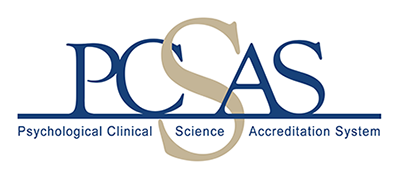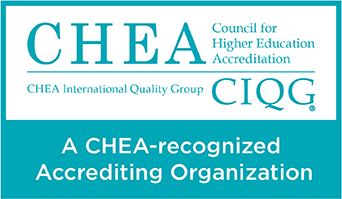by Sarah E. Paul, M.A., Washington University in St. Louis
Psychopathology is moderately-to-highly heritable, with ~30-80% of the population variance in mental illness attributable to genetic influences (Pettersson et al., 2019; Polderman et al., 2015). The field of psychiatric genetics is making new discoveries at an extraordinarily rapid pace, paralleling the dramatic reduction in cost of genotyping. One of the major lessons gleaned from the past decade of behavioral and molecular genetics research is that complex traits, including psychiatric disorders, are highly polygenic. That is, genetic influences on these phenotypes are widely dispersed across the genome, with each single genetic variant explaining, with few exceptions, a tiny fraction of the variance in phenotypic expression. Equifinality characterizes not only environmental influences on mental illness, but genetic ones as well. Likewise, just as risk factors such as poverty and maltreatment show little specificity in predicting psychopathology, there is a high degree of genetic overlap among psychiatric disorders, suggesting common molecular, mechanistic pathways.
That forms of psychopathology cannot be traced back to single genes or small groups of genes does not mean that we are helpless to identify etiologically important molecular mechanisms underlying psychiatric constructs. Indeed, significant progress has already been made, such as the replicated link between genetic variation in the major histocompatibility complex (MHC) region and schizophrenia (Schizophrenia Working Group of the Psychiatric Genomics Consortium, 2014), with implications for the role of synaptic pruning in the pathophysiology, and perhaps prevention and treatment, of schizophrenia (Bogdan et al., 2018; Sekar et al., 2016). Only with collaborative, interdisciplinary research can such progress continue. As clinical scientists—experts in the study and treatment of psychopathology—we must learn about and incorporate genetic information into our research and clinical knowledge, in order to not only enhance mechanistic insight into the etiology and treatment of mental illness, but also to a) clarify psychiatric nosology, b) better account for confounding in correlational analyses, c) increase our understanding of environmental influences, and, ultimately, d) improve treatment outcomes.
Psychiatric nosology. The recognition that expert-defined demarcations of psychiatric disorders do not reflect the dimensional, comorbid, and mutable nature of psychopathology is gaining favor, with the rise of the RDoC framework, for instance. Recent investigations into the genetic architecture of mental disorders indicate that a substantial proportion of genetic variation is shared between discretely categorized disorders (for a review, see Grotzinger, 2021), in line with the latent structure of psychopathology captured by p-factor and HiTOP models. By using transdiagnostic, mechanistic phenotypes to characterize psychopathology (e.g., reward processing, cognitive control), clinical scientists (as both scientists and clinicians) can work to better understand the dynamic nature of diagnostic presentations and associated risks. Only through interdisciplinary collaboration with behavioral and molecular geneticists (to name just two fields) can progress be achieved.
Confounding. As clinical scientists increasingly make use of data from large-scale collaborative efforts (e.g., the Adolescent Brain Cognitive Development (ABCD) Study) to model the development of psychopathology and related outcomes from a biologically informed, epidemiological perspective, they are better powered to approximate true effects and account for important sources of confounding. Given the moderate-high heritability of psychological constructs, genetic influences are a potentially sizeable confound that, when not properly accounted for, can substantially bias estimates. Consider studies that examine the role of childhood experiences (e.g., maltreatment, poverty) in the development of behavior problems. Absent data on individual genetic susceptibility to behavior problems, an observed association between said childhood experiences and behavior cannot reasonably be attributed to the effects of those experiences. Fortunately, there are ways to estimate and control for the contribution of genetic variation to phenotypic associations, such as the use of polygenic risk scores (PRS). Computed in independent samples using summary statistics from largely publicly available Genome-wide Association Studies (GWAS), PRS effectively represent cumulative genetic propensity to a given trait, or at least that captured by relatively common genetic variants. PRS are particularly appealing, because unlike heritability, they are individual-level estimates. When included as a covariate in analyses, then, PRS can remove variance in the outcome attributable to genetics, further increasing the plausibility that a significant relationship between the predictor of interest and outcome is causal.
Understanding genetics increases understanding of environmental and malleable influences. Behavior genetics research has a reprehensible past; the oft referred-to “father of behavior genetics,” Francis Galton, is also credited with founding the eugenics movement of the late 19th and early 20th centuries. Wariness of genetic data is understandable, even rational, and there are still those who flagrantly misinterpret such data to justify discrimination. We now know, however, that genetic variation is an important source of individual, but not between-group (i.e., socially constructed racial groups), differences, and so is the environment. Only through estimating these genetic contributions can the role of the environment—main effects and interactions with genetic background—be precisely delineated. Because genetic factors significantly influence the expression of psychopathology, and because this information can be easily misinterpreted and misrepresented, it is important for clinical scientists to care about genetics. More collaboration between clinical psychology and behavioral and molecular genetics research can innovate the way we all ask and attempt to answer questions about why we are the way we are, and what we can change and how.
Improving treatment outcomes. Despite the rapid advances in psychiatric genetics, PRS currently explain a relatively small percentage of the variance in complex phenotypes when compared to the heritability estimate (the so-called question of missing heritability; Maher, 2008). As GWAS sample sizes increase—facilitated by data-sharing and meta-analyses—more causal genetic loci will be identified and PRS will become more meaningfully predictive. At that point, tools such as PRS can be used to identify and target high-risk individuals for early intervention, and insight into biological and environmental factors associated with variability in prognosis can be used to stratify individuals into targeted forms of behavioral, pharmacological, and other treatments (Rees & Owen, 2020).
Using genetic data is crucial to the pursuit of causal explanations for the development and progression of psychopathology and the eventual improvement of treatment outcomes, and it has never been more practical or cost-effective to gather and analyze such data. __________________________________________________________________________________
References
Bogdan, R., Baranger, D., & Agrawal, A. (2018). Polygenic Risk Scores in Clinical Psychology: Bridging Genomic Risk to Individual Differences. Annual review of clinical psychology, 14, 119–157.
Grotzinger, A. (2021). Shared genetic architecture across psychiatric disorders. Psychological Medicine, 1-7.
Maher B. (2008). Personal genomes: The case of the missing heritability. Nature, 456(7218), 18– 21. https://doi.org/10.1038/456018a
Pettersson, E., Lichtenstein, P., Larsson, H., Song, J., Attention Deficit/Hyperactivity Disorder Working Group of the iPSYCH-Broad-PGC Consortium, Autism Spectrum Disorder Working Group of the iPSYCH-Broad-PGC Consortium, Bipolar Disorder Working Group of the PGC, Eating Disorder Working Group of the PGC, Major Depressive Disorder Working Group of the PGC, Obsessive Compulsive Disorders and Tourette Syndrome Working Group of the PGC, Schizophrenia CLOZUK, Substance Use Disorder Working Group of the PGC, Agrawal, A., Børglum, A. D., Bulik, C. M., Daly, M. J., Davis, L. K., Demontis, D., Edenberg, H. J., Grove, J., Gelernter, J., Neale, B. M., Pardiñas, A. F., Stahl, E., Walters, J., Walters, R., Sullivan, P. F., … Polderman, T. (2019). Genetic influences on eight psychiatric disorders based on family data of 4 408 646 full and half-siblings, and genetic data of 333 748 cases and controls. Psychological medicine, 49(7), 1166–1173.
Polderman, T. J., Benyamin, B., de Leeuw, C. A., Sullivan, P. F., van Bochoven, A., Visscher, P. M., & Posthuma, D. (2015). Meta-analysis of the heritability of human traits based on fifty years of twin studies. Nature genetics, 47(7), 702–709.
Rees, E., & Owen, M. (2020). Translating insights from neuropsychiatric genetics and genomics for precision psychiatry. Genome Medicine, 12.
Schizophrenia Working Group of the Psychiatric Genomics Consortium (2014). Biological insights from 108 schizophrenia-associated genetic loci. Nature, 511(7510), 421–427.
Sekar, A., Bialas, A., Rivera, H.D., Davis, A., Hammond, T.R., Kamitaki, N., Tooley, K., Présumey, J., Baum, M., Doren, V.V., Genovese, G., Rose, S., Handsaker, R., Daly, M., Carroll, M., Stevens, B., & McCarroll, S. (2016). Schizophrenia risk from complex variation of complement component 4. Nature, 530, 177 – 183.
Disclaimer: The views and opinions expressed in this newsletter are those of the authors alone and do not necessarily reflect the official policy or position of the Psychological Clinical Science Accreditation System (PCSAS).


